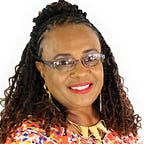5 Facts Women with a Family History of Breast Cancer Need to Know
Calculate your Risk of Developing Breast Cancer
A diagnosis of breast cancer is a life-altering event for the woman and her family. It is an awakening that you are not immortal. It puts fear in your life. I was thirty-three years old when my mother was diagnosed with breast cancer. I was thirty-seven years old when she died.
When my mother was diagnosed with stage four breast cancer, she did not have distant metastasis, but she did have three lymph nodes that were positive for cancer. When the surgeon did the mastectomy, he removed underlying muscle and one of her ribs because of a long telomere that extended from the cancer tumor. The fact that the telomere was near a bone was disturbing. Still, I had hope. Prior to the surgery she was prescribed radiation therapy, which she did.
After the surgery, she had chemotherapy. An analysis of her tumor revealed that the tumor was not estrogen or progesterone receptor nor BRCA1 or BRCA2. This meant that her tumor would be more aggressive. She had three rounds of chemotherapy. Everything looked good. I felt that if the cancer were going to come back it would happen sometime in the second-third year. About one month after her second year of clearance she began to complain of back pain. She had a magnetic resonance imagery (MRI) of her spine, and it revealed a hot spot in the lumbar region. She had radiation therapy to the lower back followed by chemotherapy. That worked for a while. Then she began to drag her right foot and lost her ability to drive. Then she began to complain of headaches, and I knew she was nearing the end. She died four months later.
At her funeral one of her sisters whispered to me “I had a mammogram, and they found a lump. The only reason I got the mammogram was because of your mother’s diagnosis.” This message threw me for a loop. I felt that I could not deal with any more cancer. It was too fresh. Too painful. My brother helped her. My aunt did survive because her cancer was diagnosed in Stage 1.
About fifteen years after my mother’s death, I met two of her first cousins. We were talking about my mother’s cancer and that she was the only one in the family that had been diagnosed with breast cancer. They quickly disavowed me of that thought. They told me that one of their first cousins had died from breast cancer when she was young. I was shocked. I was told that this cousin had died from brain cancer. In essence, she died from breast cancer that had metastasized to her brain. Same as my mothers.
What does all this mean for me
Fact 1: It means that the females in my mother’s side of the family have a greater risk of developing breast cancer. I told my doctor about it, and I began to have mammograms at thirty-seven years of age.
Fact 2: All women should start getting a yearly mammogram after the age of 40. If you have a family history of breast cancer, you may need to start having yearly mammograms earlier.
Fact 3: Approximately 10% of breast cancers are due to defective gene inheritance. The most common inherited gene defects for breast cancer are BRCA1 and BRCA2; however, these are not the only two gene mutations associated with breast cancer. Other genes affected include PALB2, ATM, and CHEK2. Therefore, it is important that female family members of a person diagnosed with breast cancer talk to their doctor about genetic testing. Criteria for genetic testing include:
1. Family history of beat cancer due to a gene mutation
2. Ashkenazi Jewish ancestry
3. Diagnosis of breast cancer before the age of 50
4. A male in the family diagnosed with breast cancer
5. A personal diagnosis of ovarian cancer
6. Multiple breast cancers on one side of your family
7. Cancer was diagnosed in both breasts.
Fact 4: Genetic counselling will occur prior to testing to determine whether you should or should not have the genetic testing done and if you meet the criteria for genetic testing.
Fact 5: The genetic test is a multipanel gene test that is done on a blood sample. You will be scheduled for a review of the test results in approximately 14 days.
Also, I found two websites that can help you calculate your risk of developing breast cancer using either Gail model or the BCSC model. Click on one of the blue words to take you to the calculator website.
Reference
Family History of Breast Cancer. Available online at https://www.hopkinsmedicine.org/breast_center/breast_cancers_other_conditions/family_history_breast_cancer.html
